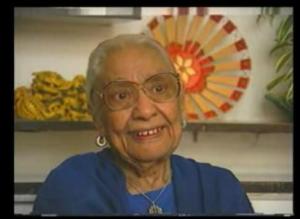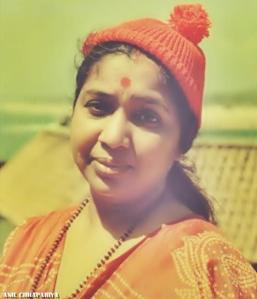 Zohrabai was leading singer for Vasantrao Desai in his many movies in 40s. Zohrabai in movie Andho ki Duniya... Sunaoo haal e dil kaise...song starts with sweet prelude and especially like that humming and one pause on ‘Ha’ is so typical in Noorjehan style…
Zohrabai was leading singer for Vasantrao Desai in his many movies in 40s. Zohrabai in movie Andho ki Duniya... Sunaoo haal e dil kaise...song starts with sweet prelude and especially like that humming and one pause on ‘Ha’ is so typical in Noorjehan style…
Movie—-Andhon Ki Duniya
Singer—Zohrabai Ambala
Lyrics—Behzad Lucknavi
M/D——-Vasant Desai
#Anand Juvekar
——————————————————————
Zohrabai Ji was one of the most versatile singers of the 1940s, mastering the art to playback to a truly unmatched degree. Struggling till 1942 with very few songs per year, she finally gained recognition with her songs in Shakuntala (1943) which was a super hit film. The same year, she sang the first time for a heroine in Talash (1943), with music by great composer Khan Mastana Ji, who has contributed a lot to help her become popular during her early playback days. Finally, it is well known that in 1944, under Naushad Ji’s baton in the blockbuster film Rattan, she became a top and much in – demand playback singer. Zohrabai Ji could sing just any kind of song, classical, semi – classical, light, western, express explicitly any mood, romantic, cheerful, innocent, funny, seductive, melancholic, mysterious, devotional and also unique emotions like revolt, fighting for social rights. Being a playback singer, she has sung a huge variety of songs, which is seldom recognised.
Her voice has been matched by very few, with a great amount of sweetness, control, strength, required heaviness and grit. In songs like ‘Rumjhum Barse Badarwa’ and ‘Suno Ji Pyari Koyaliya Bole’ she sounds so cheerful and makes you smile at the beautifully voiced heroine singing romantically. In songs like ‘Haan Haan Barse Ji Barse’, ‘Mohe Baanka Baalam Lage Pyara’, her voice sounds very different and soft, and makes you feel the character’s innocence. In songs like ‘Padhoge Likhoge’, ‘Panja Chakka Khel’ (satirical!) and ‘Dilli Ki Galiyon Mein’ she takes comical playback singing to a new degree, making us laugh aloud and feel that she is unmatched in this genre. Being one of the boldest singers of the era, she may have sung maximum number of seductive or ‘item songs’ of 1940s, though not so vulgar then. ‘Qasam Jawani Ki’, ‘Balam Ji Ye Kya Jadoo’, ‘Nainon Mein Naina’, ‘More Jubna Ka’, ‘Piya Harjai Re’ (Thumri), ‘Mere Pehlu Mein Hai’, ‘Samne Gali Mein’ and ‘Patthar Se Tum’ prove that audio is enough to emote seductiveness. Perhaps that is why she was not favoured as a lead singer by too many composers, and given more of side and seductive songs.
In songs like ‘Aankhon Mein Intezar’, ‘Aayi Deewali’, ‘Toota Huwa Dil’, ‘Sunaoon Haal – E – Dil Kaise’, ‘Bheegi – Bheegi Palkein’, ‘Unhein Bhi Raaz – E – Ulfat’ (Ghazal) she sounds opposite to her robust, energetic self and melts your heart with the sadness of the songs. In ‘Saqi, Saqi’, ‘Ja Raha Hai Karwan’ (background narrative), ‘Zindgi Ik Safar Hai’ (Pukhti – stylish seductive), ‘Kunwar Thane’ (narrative), ‘Zara Mori Gali Aa Re Balam’ (as if hiding sadness), ‘Moorakh Gyani Huwa’ and ‘That Baat Se’ (teasing Tamasha) and such songs there is a lurking mystery and stylishness which is pleasantly haunting. She has sung lovely devotional, and indirectly optimistic songs like ‘Bhole Musafir’ (a devotionally optimistic message from a street singer), ‘Nainon Mein Krishna Murari’, ‘Chabi Dikhla Ja’, ‘Gharibon Ke Daata’, ‘Auron Ke Dukh’, ‘Bhakton Ki Ye Fariyad’ and ‘Bhagwan Bata’ beautifully. She also contributed in her own way to revolts and social justice demands by songs like ‘Bharatmata Ki Beti’ (women’s empowerment), ‘Jaago Jaago Savdhan Ho’ (hidden call of independence), ‘Chane Masaledar Babu’ (teaching good morals and unity through simple lyrics), ‘Doobte Bharat Ko Bachao’ (devotional but also patriotic uprising), ‘Fariyad Na Kar’ (living against injustice with grit), ‘Jaag Jaag Mewad’ (a robust war song). Apart from these, she has sung to excellence several classical songs, Ghazals, Thumris, wedding songs, etc. She has also sung with several contemporaries adding to the attraction.
Here is a very beautiful innocently romantic duet of Zohrabai Ji and Surendra Ji (it was too difficult to choose!) in Ratnavali (1945): Ratiyan Ghuzaroon Kaise Haye Ram, Nindiya Na Aaye. The extremely sweet, powerful and sharp voice of Zohrabai Ji is wonderfully matched with Surendra Ji’s handsome, masculine and sweet voice. One of my most favourite, both for the song, all departments as well as the singer combination.
#VIDUR SURY
==========================================================================
मैं क्या करूँ हे ननदी

zohrabai
आये सजन नहीं मोर …….
Zohra bai Ambalewali , the name leads me to so many lovely songs of HFM with a great variety of shades and colors , be it sozful touching songs or those ‘Natkhat’ seductive beauties, be it a romantic expression or a traditional beauty ,be it a Bhajan kind of song, her voice gives expression to all these genres with great finesse , With her distinctive voice and tonal quality she always engages the listener to the core , what a voice and what an adaayagii !
Sharing one of her almost a rare song from the 1948 film Ajaamil , a composition by Master Mohan Junior is kind of a song where Zoharabai’s voice gives a fitting expression to this traditional emotion of separation of the beloved , her controlled and competent style of adaayagii of the words which can give images to the lyrics is just beyond words here , enjoy this rare beauty in one of the most expressive , sozful, and distinct voices of HFM the one and only Zohrabai Ambalewali !
#Arun mudgal
==========================================================================
इसे भी पढ़ें : ”उस ज़माने में सुबह 6-7 बजे निकलते थे घर से . काफ़ी मेहनत लगती थी . उस ज़माने में कलाकारों की काफ़ी इज्ज़त होती रेडियो में ”



